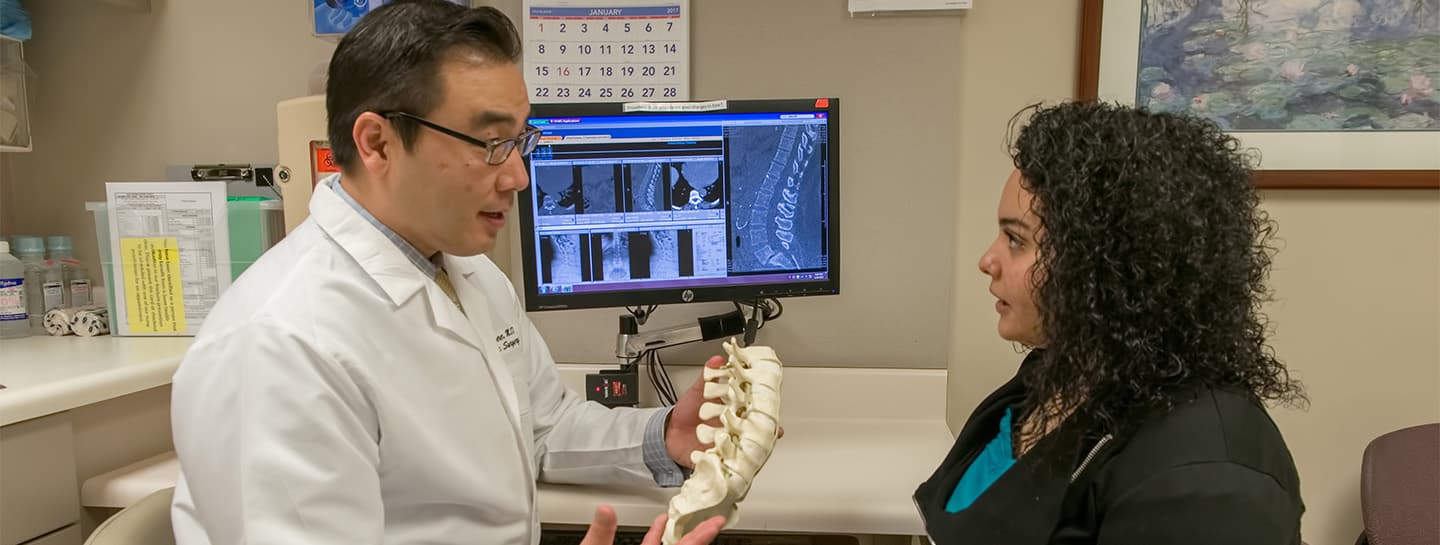
Comprehensive, Multidisciplinary Spine Center
Where You Start Your Spine Care Matters
UChicago Medicine's Comprehensive Spine Center combines the expertise of neurosurgery and orthopaedic surgery, with a shared goal of providing the best treatment plan for you that emphasizes your health, well-being and outcomes. Our multidisciplinary team of orthopaedic surgeons and neurosurgeons are committed to an approach that centers around tailored treatments based on each patient’s individual diagnosis, symptoms, causes, risk factors and more to create the safest and most effective treatment plan. In some cases, medication and lifestyle changes can decrease the risk of the condition worsening, while in other cases, surgery will be the ideal recommendation.
Our spine center's world-class orthopedic surgeons and neurosurgeons work together to provide you with leading-edge treatment that offers advanced techniques for a faster surgical recovery and overall best possible outcomes. Sophisticated stereotactic techniques — some of which were developed at UChicago Medicine — are used to help pinpoint the exact location of spine pain, or other abnormalities. We focus on compassionate and collaborative care and recommend the most effective treatment(s) for your condition. If you are feeling spine, back and/or neck pain, you can schedule an appointment online or call 773-834-0000 to make an appointment with our spine experts without a referral from a primary care provider.
